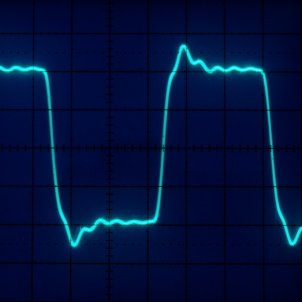Unless you’re in the business, you may not know there’s a serious challenge facing the cellular phone industry beyond who’s coming out with the next iPhone competitor. It’s precision time distribution. Yes, this little-known but critically-needed telecom utility has been holding back the wireless future.
The growing popularity of iPhones and other devices that support rich media and Internet browsing is adding tremendous data capacity pressure onto the already severe cost pressure that keeps wireless service providers up at night. The traditional Time Division Multiplex (TDM) lines that connect cellular Base Transceiver Stations (BTSs) to the wireline network have historically distributed the required timing along with the voice and data traffic. The trouble is, each of these lines can cost thousands of dollars to lease annually from wireline providers, so adding TDM lines to increase capacity isn’t economically viable. The obvious solution is to replace TDM lines with carrier-class Ethernet – massive reliable capacity at one-sixth the cost of TDM – which providers have been contemplating for years. But the trouble is timing: how do you distribute precision time over an asynchronous packet network like Ethernet?
Time over Packet Networks: IEEE 1588-2008 Precision Time Protocol
Telecom timing gurus and networking mavens have joined forces to solve the vexing problem of precision timing over asynchronous packet networks. The result is a new standard, called IEEE 1588-2008 Precision Time Protocol (PTP), that’s able to transfer time with microsecond-range accuracy and parts-per-billion frequency stability over miles of multi-hop Ethernet paths. For comparison, time-transfer accuracy across smaller local-area networks (LANs) can be in the nanosecond range. This is very non-intuitive, but very doable. In fact, it’s good enough to deliver the stable 16 ppb (parts per billion) long-term frequency reference and +/- 1 microsecond time reference requirements of existing 3G and emerging 4G cellular standards.
PTP is a client-server protocol in which PTP clients (also called slaves) exchange synchronization messages with PTP grandmaster clock (GMC) servers, ensuring that client time is precisely synchronized with GMC time. Stable frequency comes across as well, since you need that for stable time. The frequent exchange of messages and a sophisticated oscillator-control servo design combine to overcome the packet-delay variation inherent in asynchronous packet networks like Ethernet. Figure 1 illustrates the basic message transactions architectural building blocks of the PTP protocol.
1: IEEE 1588-2008 Precision Time Protocol (PTP) Messaging
PTP clients can be implemented in a variety of forms. “Translators” convert PTP to traditional time or frequency signals that allow PTP to be retrofitted into legacy backhaul systems, embedded PTP client boards, or modules that provide the cost advantage of an integrated solution without needing to become a PTP expert. Or there are fully integrated firmware/software implementations that leverage the host system’s processing power for ultimate flexibility and cost-effectiveness.
IEEE 1588-2008 Best Practices for Cellular Backhaul
Following some simple deployment guidelines helps to ensure the best results for Ethernet cellular backhaul timing applications. Figure 2 shows a simplified application view.
2: Ethernet Cellular Backhaul Timing
The most important decision is selecting PTP GMCs and clients designed to operate in a telecom environment, including “carrier-class” products with appropriate performance, reliability, monitoring and management capability, warranty, and support. Hardware time-stamping on both GMC and client ends is imperative to achieve the required stability. Good quality GMC, client-oscillator, and servo (frequency control) quality will make or break performance under challenging and network conditions, including outages. PTP supports a range of timing message update rates. GMCs and clients with the ability to update as often as 128 times per second help significantly with highly dynamic traffic levels and network packet delay variation (PDV) characteristics as well as path reroutes.
Several factors contribute to effective Ethernet backhaul timing network design. GMC serving capacity and the number and type of network elements between GMC and PTP clients are the primary concerns in selecting PTP GMC deployment locations. GMC capacity needs to support the sum of the message update rates for all assigned clients. Measurements of a variety of carrier-class network cascades under various traffic conditions have led to excellent results with PTP networks up to ten hops. PTP supports alternate or backup GMCs, so planning for potential GMC outages by ensuring that backup GMCs have the capacity to support their clients will ensure carrier-class reliability. Remote monitoring and management capability in GMCs and clients will keep network managers informed of timing network health and reduce operating expenses (OPEX).
PTP equipment suppliers can provide more details on PTP application best practices.
Conclusion
The cellular phone industry is solving its costly Base Transceiver Station (BTS) timing problem with IEEE 1588-2008 Precision Time Protocol (PTP). PTP delivers BTS frequency and time references along with voice and data traffic via Ethernet backhaul at one-sixth the cost of traditional Time Division Multiplex (TDM) solutions. Applying simple deployment guidelines ensures the best results under varying environmental and network conditions. IEEE 1588-2008 fulfills the promise of Ethernet cellular backhaul for low-cost delivery of rich media on mobile devices.







7 thoughts on “Telling Time Over Ethernet”